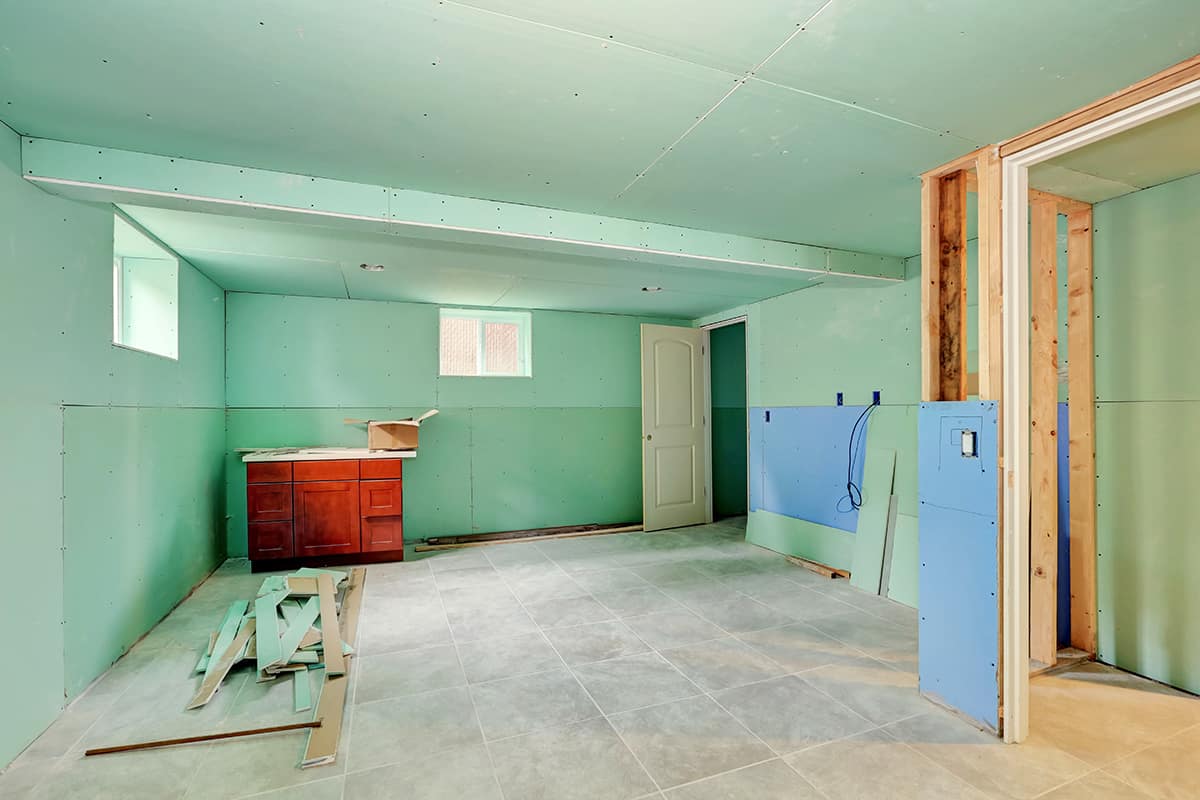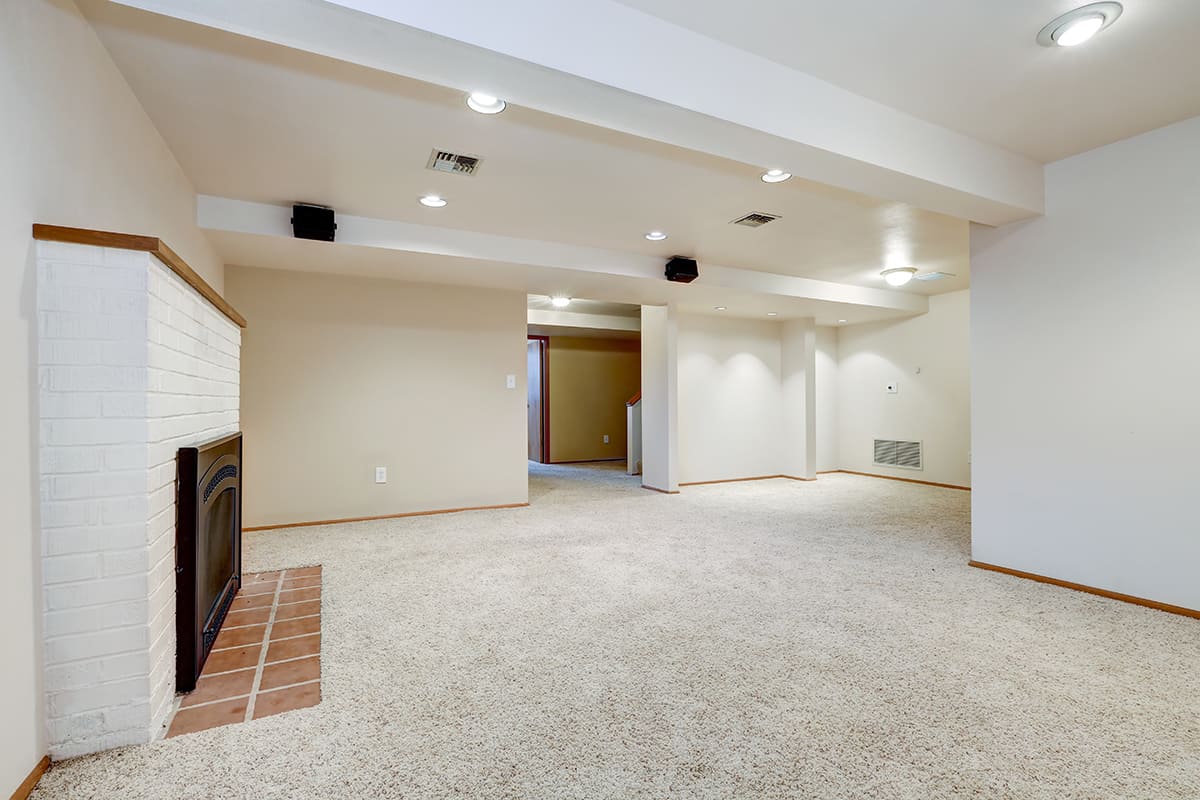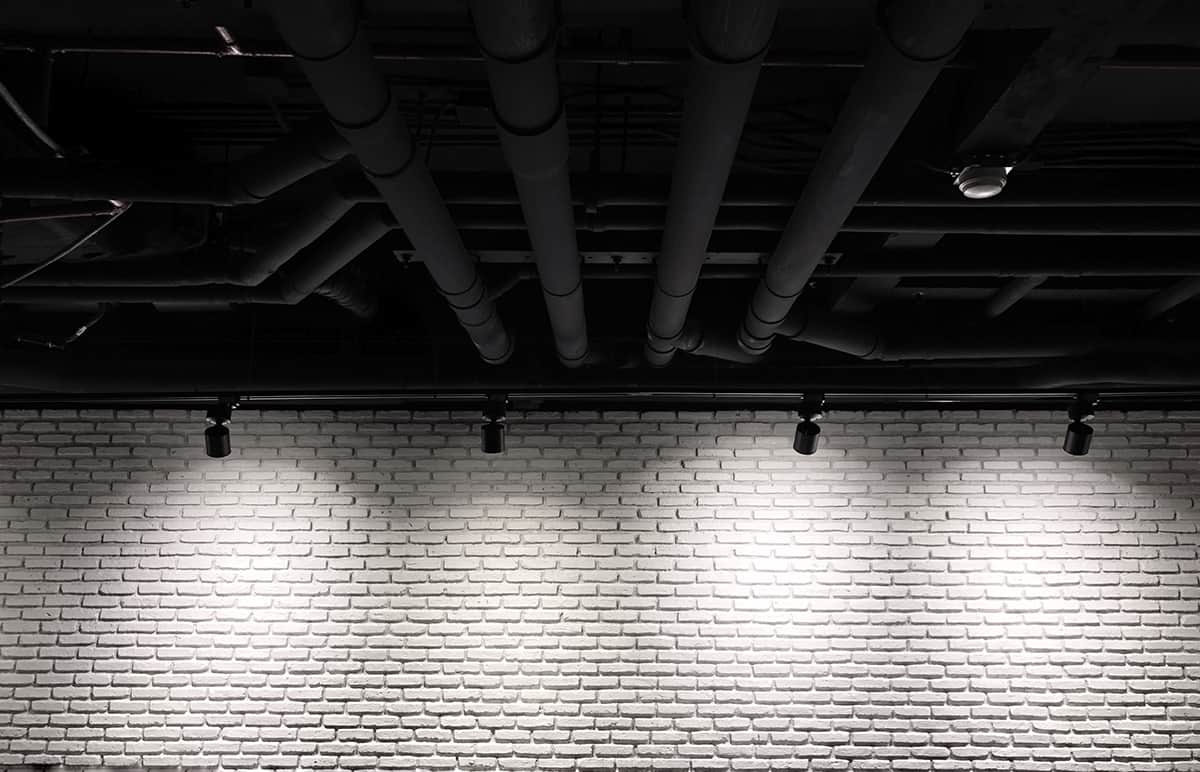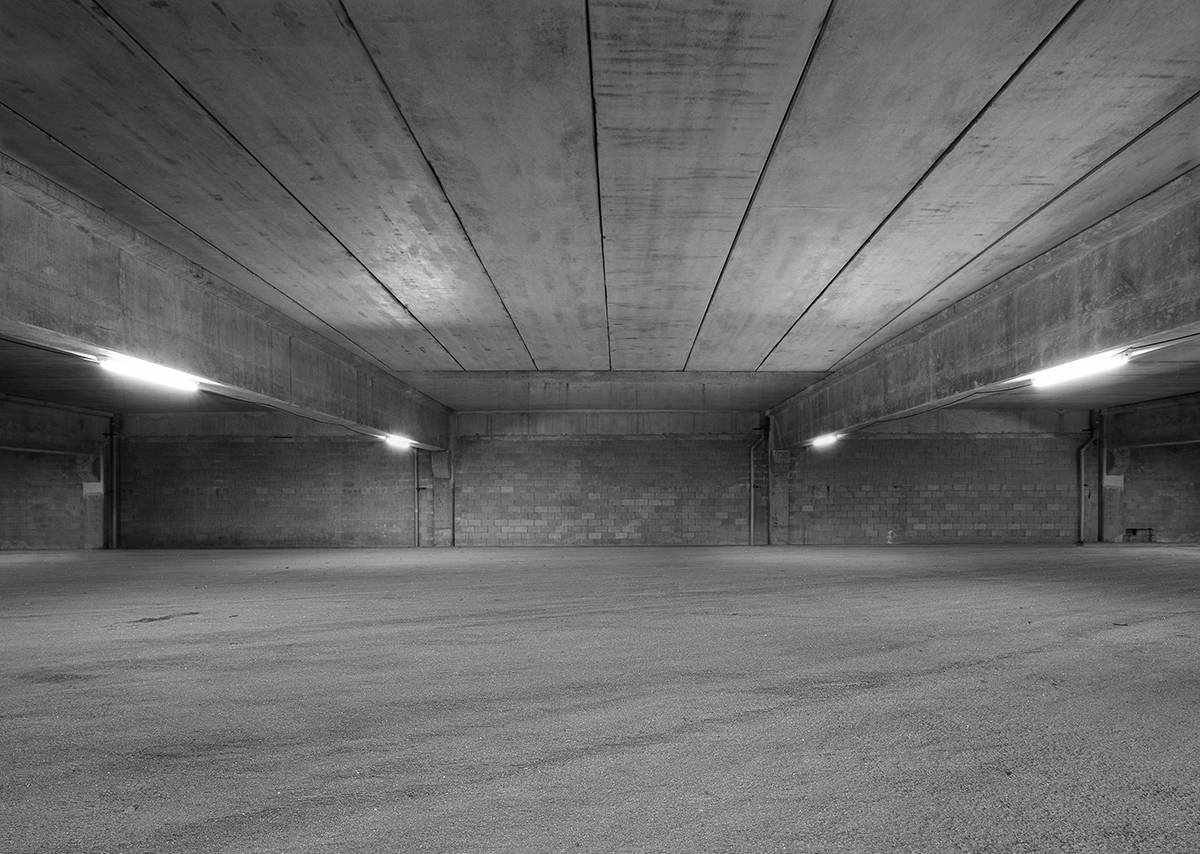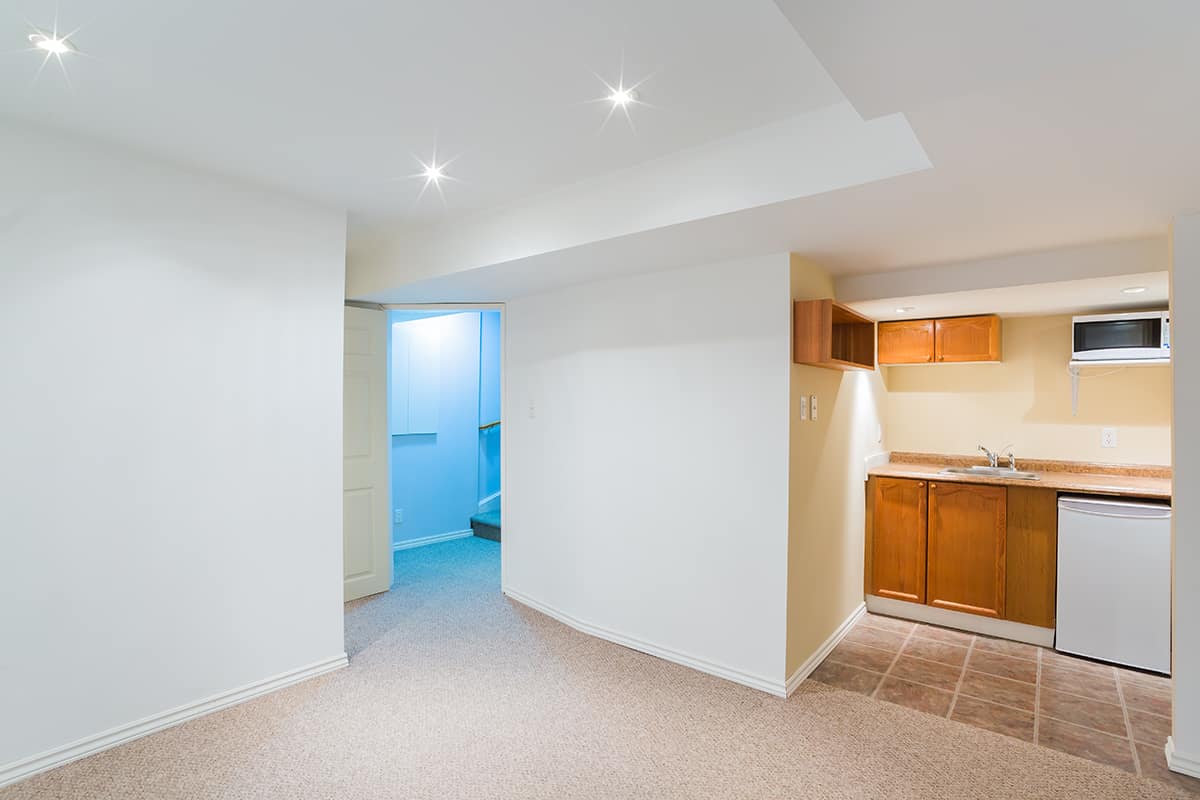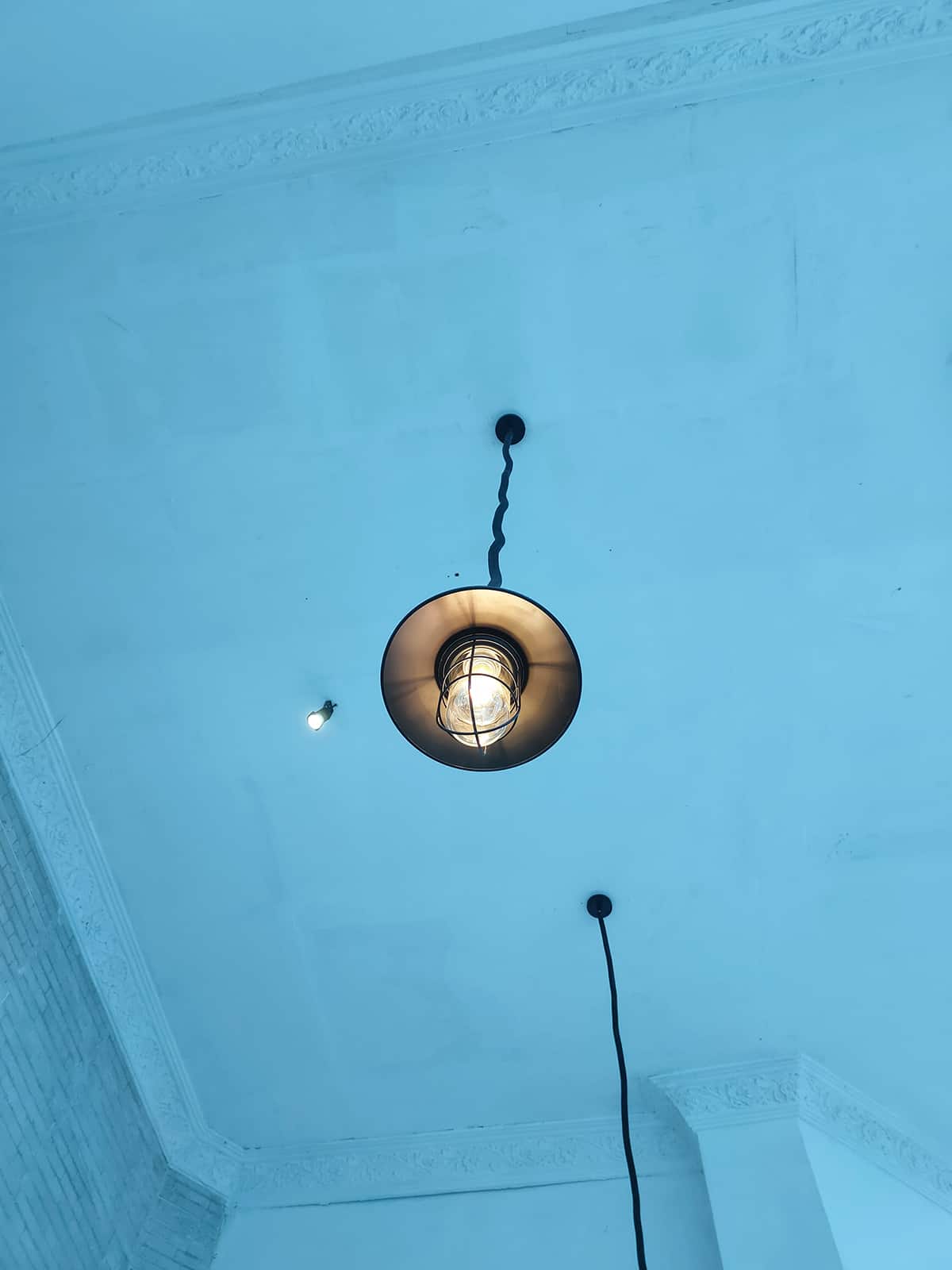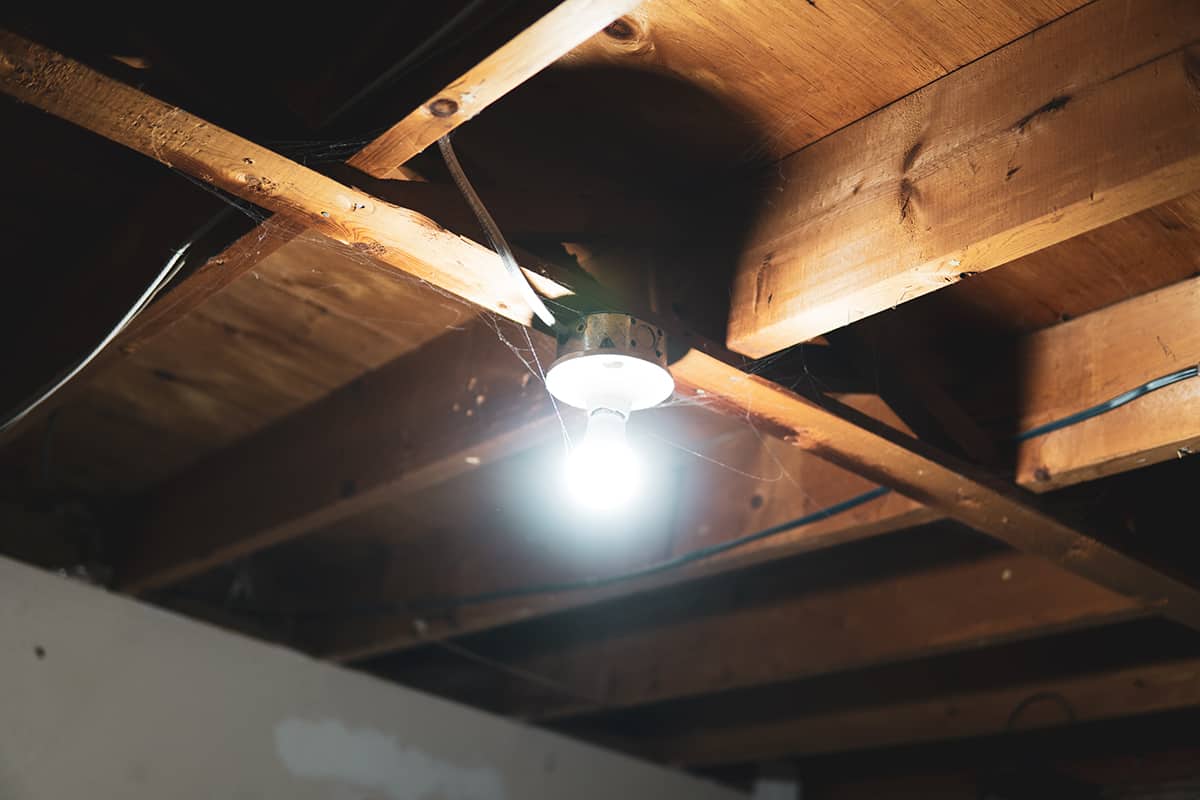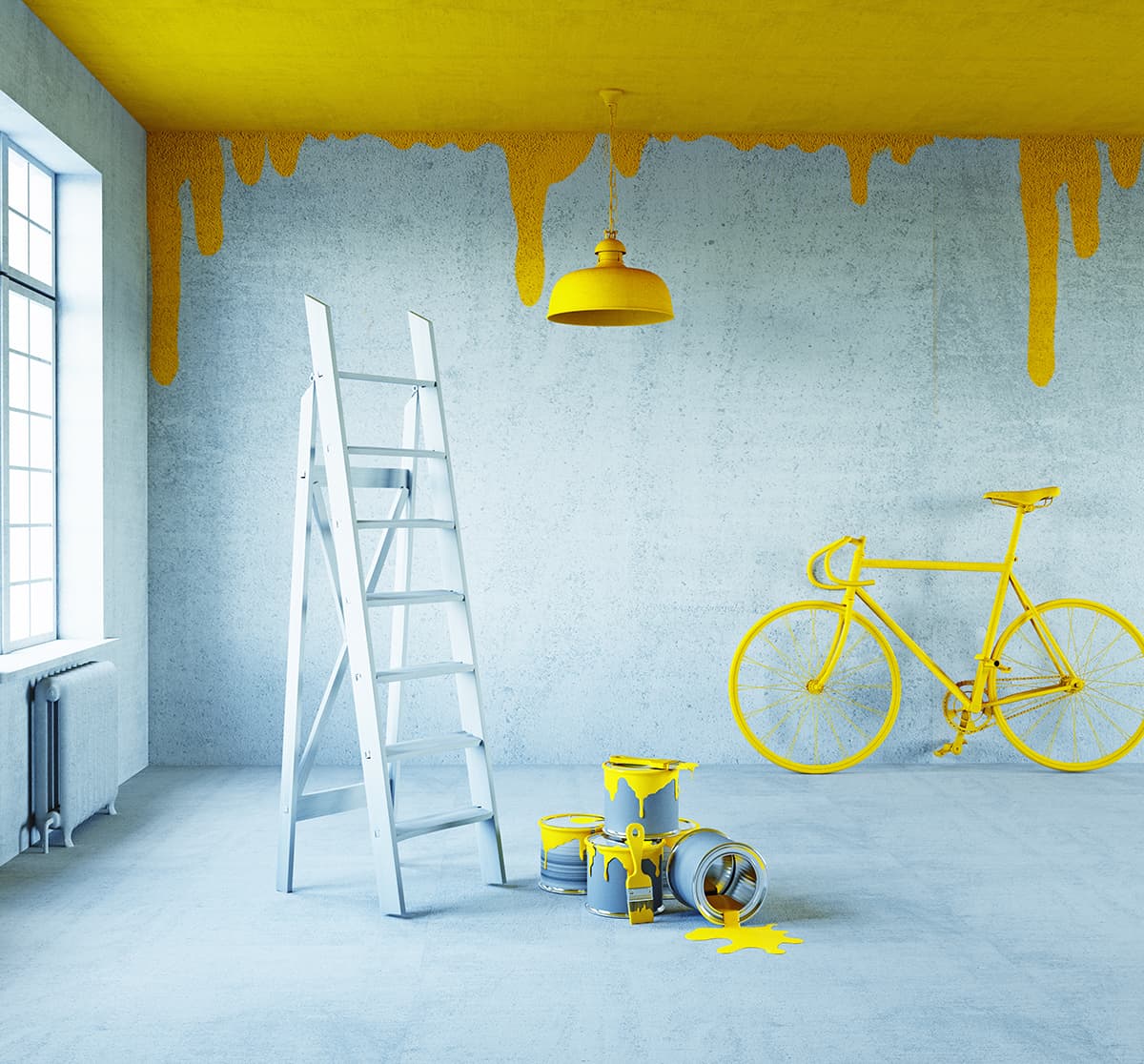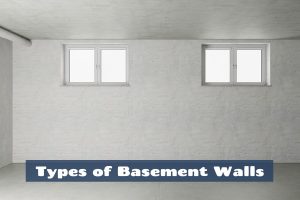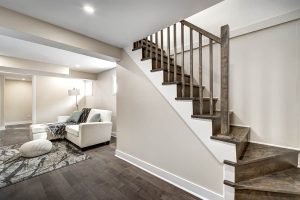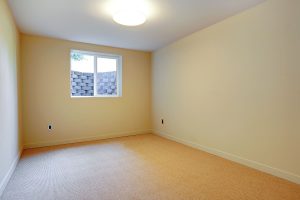Ceilings are traditionally painted white. In fact, most people have never even considered painting their ceilings in any color, because it is so ingrained in us that ceilings should be white. However, there is a growing trend for painting the ceiling in a different color. If you’re considering exploring other paint colors for the ceiling, the basement is a great place to start.
The color you choose should reflect the type of feel you want to achieve in your basement, and of course, this depends on what you intend to use the room for. Here we look at some stylish basement ceiling paint colors and explain how they can affect the atmosphere in your basement.
Should Basement Ceilings be Painted?
The answer to this question depends on what type of basement you have, and the finished look you want to achieve. If you have an unfinished basement with wiring or vents on the ceiling, then you may not be inclined to paint it, but actually painting it could help to hide the fittings.
However, if you’re happy with a more industrial, utilitarian look, then you could leave the ceiling unfinished. If the basement is being used as a common living space, then it makes sense to paint the ceiling the same way that you would paint the ceilings in any other room.
Painting the ceiling can help to hide any flaws, such as cracks or uneven areas of the ceiling. If your target is to blend away imperfections, then dark colors of paint in matte finishes will work best. Avoid pale colors or paint with a sheen finish, because this will draw attention to flaws.
Best Basement Ceiling Colors
Cream
If you want to branch out from the typical stark white ceilings, but aren’t feeling especially brave, then cream is a good choice. The cream has warm yellow-orange undertones which can make a room feel brighter and sunnier.
If your basement feels cold or uninviting, then a cream ceiling could be just what you need to make the room feel more welcoming.
Black
Basement ceilings that have wiring or venting running along them can benefit from a darker paint color. Black is a brilliant color choice for this scenario because it will help wires and other fittings blend into the background. A black ceiling can also create a sleek and intimate feel in a basement, which will be ideal if you plan to use the space as a snug or family TV room.
If you paint the walls of a basement in black to mimic the feel of a movie theater, you can continue the black paint on the ceiling to achieve a really immersive experience. Opt for a matte black finish to make the ceiling appear to recede, as opposed to a gloss finish that would make the ceiling feel lower.
Gray
Gray paint can be used on basement ceilings to achieve a cozy and modern vibe. Gray paints with cool undertones are ideal for installing an industrial, edgy vibe, while warm gray paints with hints of beige will look contemporary while adding a sense of comfort to the space.
Use paler gray shades if you want to maintain an open and airy feel, while darker grays will work well for creating a more cozy, intimate vibe.
White
White is the standard ceiling color in most homes, and the reason for this is that it works. White goes with any color, so you don’t need to worry about whether your ceiling coordinates with your walls, and it reflects light so it can help a room to feel more open and spacious.
If your basement is fortunate enough to receive a good amount of natural light, then a pure white ceiling can help the whole room appear bigger and brighter. Conversely, if the basement doesn’t get much natural light, then a pure white ceiling can actually make the space feel dank and depressing. In this instance, a cream or a warm shade of off-white will help to make the room feel brighter and less gloomy.
Lime green
Lime green might seem like an outlandish color choice for a basement ceiling, but it’s a really vibrant and energetic color that is ideal for basements that will be used as home gyms. Paint your walls in dark gray with the ceilings in lime green, for a bold and funky look that is inspiring and fresh.
These colors will help you feel motivated to work out, and they will ensure the room has a cool vibe even when things get sweaty. Painting your gym ceiling in a bright color can also help you to stay focused and hold your interest when you are laying on your back looking up for example when doing sit-ups.
Sky blue
When it comes to ceiling colors that are not white, sky blue is a popular choice. This is because it helps us to view our ceiling as the natural sky, and helps us feel peaceful and calm. Sky blue is known to be a soothing and relaxing color, so it works well if you use your basement as a yoga studio or an art studio.
It’s also a lovely look for a basement that doubles up as a children’s playroom; in this instance, you could paint a mural of a forest or a beach on the walls, and paint the ceiling in sky blue with a few fluffy white clouds dotted around the space.
Brown
Many people like to use their basement as a second living room, with the upstairs living room being more formal and the basement living room being more casual. If you want a casual and cozy basement then a brown ceiling will be a good option.
Brown is a color that can sometimes have a reputation for being bland, but if you find the right shade of brown with depth in it, then the room can feel sumptuous and warm. If you paint both the walls and ceiling in a rich shade of brown, it can feel like being wrapped up in a cozy blanket on a cold winter’s day. Add a roaring fire in the corner and a large-screen TV, and you’ll have the perfect setup for snug evenings with your loved ones.
Lemon yellow
Yellow is a joyful color that’s associated with feeling happy and sunny. This is a nice color to use if your basement feels dull or dreary from a lack of natural light.
Painting the ceiling yellow will instantly make the space feel brighter and it can also help the room to feel bigger if your basement doesn’t have the biggest proportions. Low ceilings can be lifted with a pale and cheery, lemon yellow paint.
Should the Ceiling be the Same Color as the Walls?
The ceiling does not have to be the same color as the walls in a basement, or in any room for that matter. However, there is a growing trend for continuing wall paint onto the ceiling, because it prevents the top of the wall from being such a sudden stopping point. By painting the ceiling and the wall in the same color, they blend into one another quite seamlessly, which can make the walls seem never-ending. The result of this is a space that appears much bigger than it really is.
The color you use for the walls and ceiling could be pale, bright, neutral, or dark. The color itself is less important than the fact that the ceilings and walls all merge into one, as this is what creates the illusion of an immersive and extensive space.
Light paint on both the ceiling and walls will create a sense of openness and airiness, while dark paint on both ceiling and walls will appear to be receding to create a room that feels intimate yet large.
Can You Wallpaper Ceilings?
Sticking wallpaper on the ceiling is an unusual way to use wallpaper, but it’s an idea that’s been gaining traction on social media. The maximalist trend that has recently seen a huge surge in popularity suits this look perfectly. You can continue wallpaper on the walls onto the ceiling for a really busy look, or you can paint the walls and then choose a wallpaper, especially for the ceiling.
Wallpapering a ceiling is a tricky task, even if you are experienced in DIY. It’s best to hire a professional with experience in applying wallpaper on the ceiling so that you don’t wind up with peeling corners or misaligned patterns. If you want to experiment with wallpapered ceilings, a basement is a nice choice because the resulting look will be atmospheric and cozy.
This can work especially well in large basements, to bring the room together and make it feel less expansive. If your basement has a low ceiling, drawing attention to it actually turns what could have been a negative into a positive, making a feature of the ceiling rather than trying to hide it.
